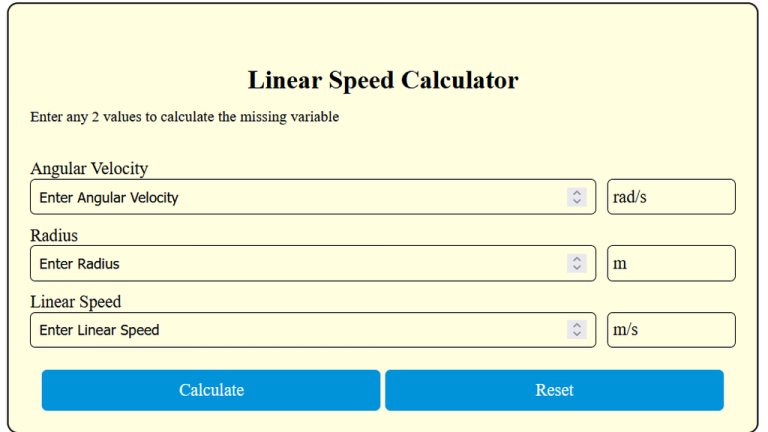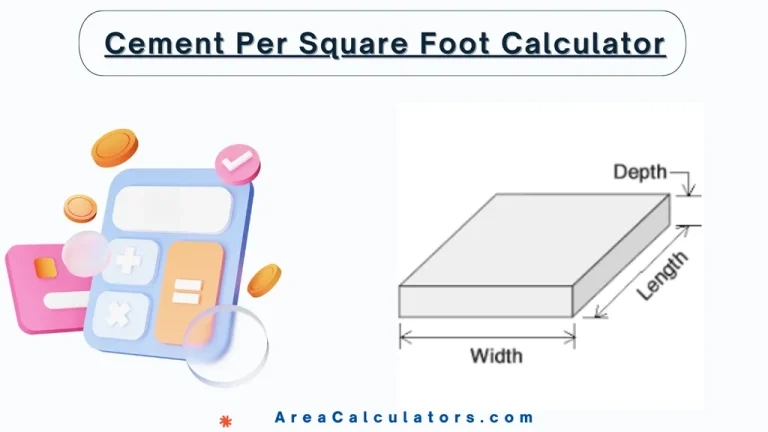Tent Area Calculator
To calculate the tent area, multiply the length of the tent (TL) by the width (TW). This will give you the total area in square feet or square meters, useful for planning space needs.
To calculate the tent area, multiply the length of the tent (TL) by the width (TW). This will give you the total area in square feet or square meters, useful for planning space needs.
A Tent Area Calculator helps you determine the total floor area of a tent, which is essential for planning events, outdoor activities, or large gatherings. Knowing the tent area is important to ensure you have enough space for guests or equipment.
TA = TL × TW
| Symbol | Meaning |
|---|---|
| TA | Tent Area |
| TL | Tent Length |
| TW | Tent Width |
Example 1:
| Calculation | Instructions |
|---|---|
| Given: TL = 30 feet, TW = 20 feet | Start with the given tent length and width. |
| TA = 30 × 20 | Multiply the length by the width. |
| TA = 600 square feet | The total tent area is 600 square feet. |
Answer: The calculated tent area is 600 square feet.
Example 2:
| Calculation | Instructions |
|---|---|
| Given: TL = 10 meters, TW = 8 meters | Start with the given tent length and width. |
| TA = 10 × 8 | Multiply the length by the width. |
| TA = 80 square meters | The total tent area is 80 square meters. |
Answer: The calculated tent area is 80 square meters.
A Tent Area Calculator helps you determine how much space a tent will cover. For example, if your tent is 20 meters long and 10 meters wide, the area would be 200 square meters.
Choosing the right tent size is important for your event. For 100 guests, you might need a tent that can accommodate not just seating but also space for a dance floor. A tent size chart can guide you in selecting the appropriate size based on the number of guests. For instance, a tent measuring 30×40 feet can typically hold around 100 people.
If you’re unsure about specific dimensions, it’s helpful to know the capacity of different tent sizes. A 10×10 tent covers 100 square feet, suitable for smaller gatherings. Understanding these measurements ensures your event will have enough space for everyone to enjoy comfortably.
The Tent Area Calculator makes it easy to know how much space a tent covers. Whether for camping or big events, having an accurate measurement of the Tent Area is important for planning and using the space well.

To calculate the bathroom area, multiply the length of the bathroom (BL) by the width (BW). This will give you the total area in square feet or meters, useful for tiling and space planning. A Bathroom Area Calculator helps you determine the total floor area of a bathroom, which is essential for planning renovations, calculating…
To calculate bowling ball speed, divide the distance the ball travels (in feet) by the time it takes to cover that distance (in seconds). The Bowling Ball Speed Calculator is a vital tool for bowlers, coaches, and cricket enthusiasts. By calculating the speed of the ball, it helps improve technique, optimize performance, and analyze player…

To calculate THC content, multiply the total milligrams of cannabis by its THC percentage. A THC Calculator is a useful tool for determining the total amount of THC in various cannabis products, such as flower, edibles, tinctures, or oils. By knowing the THC content, you can estimate dosages accurately and tailor your consumption to suit…

To calculate linear speed, multiply the radius by the angular speed. The Linear Speed Calculator can smoothly measure the linear speed (velocity) of an object moving along a circular path. The linear speed is related to the radius of the circle and the angular speed, which is the rate at which the object rotates. This…

First, determine the area in square feet of your slab. Then, input the thickness of the slab in inches. Multiply the area by the thickness (converted to feet) and divide by 27 to get the total amount of cement required in cubic yards. A Cement Per Square Foot Calculator is the perfect tool for calculating…
To determine the capacity of a bulk bag, the Bulk Bag Capacity Calculator uses the formula that factors in the bag’s length, width, height, and a constant multiplier for cubic conversion. This calculation ensures an accurate volume measurement in cubic feet or meters. The Bulk Bag Capacity Calculator is an essential tool for industries handling…